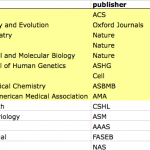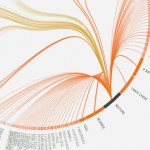articles
The Backstory: As it stands today,when one of the National Institutes of Health (NIH) provides the funding for a scientific research project, and those results are published, they must be made freely available to public, within a set period of time. The reasoning behind this requirement is that taxpayers funded everything about the research except for the final publication, and so they have already paid for access.
The Research Works Act (#RWA), HR 3699, is a bill in the House of Representatives that would roll back this requirement. If it passes, taxpayers will…
Over at Tor.com, Jo Walton is surprised that people skim over boring bits of novels. While she explicitly excludes non-fiction from her discussion, this immediately made me think of Timothy Burke's How to Read in College, which offers tips to prospective humanities and social science majors on how to most effectively skim through huge reading assignments for the information that's really important.
I've mentioned this before, but I don't think I've done a science version. I've been doing more reading of journal articles lately than I have in a while, though, and it occurs to me that similar…
SEEDmagazine.com interviews Carl Bergstrom, whose eigenfactor project uses citation databases to map networks of information sharing within science:
We find papers to read by following citation trails. If you have an eigenfactor of 1.5, it means 1.5% of the time, a researcher following citation trails is actually trying to get an article from your journal. . . How do you make the right connections, right? How do you make the critical connections to move thought forward? If you can solve a problem like that, or even just make a little contribution to it, it really accelerates science in a…

